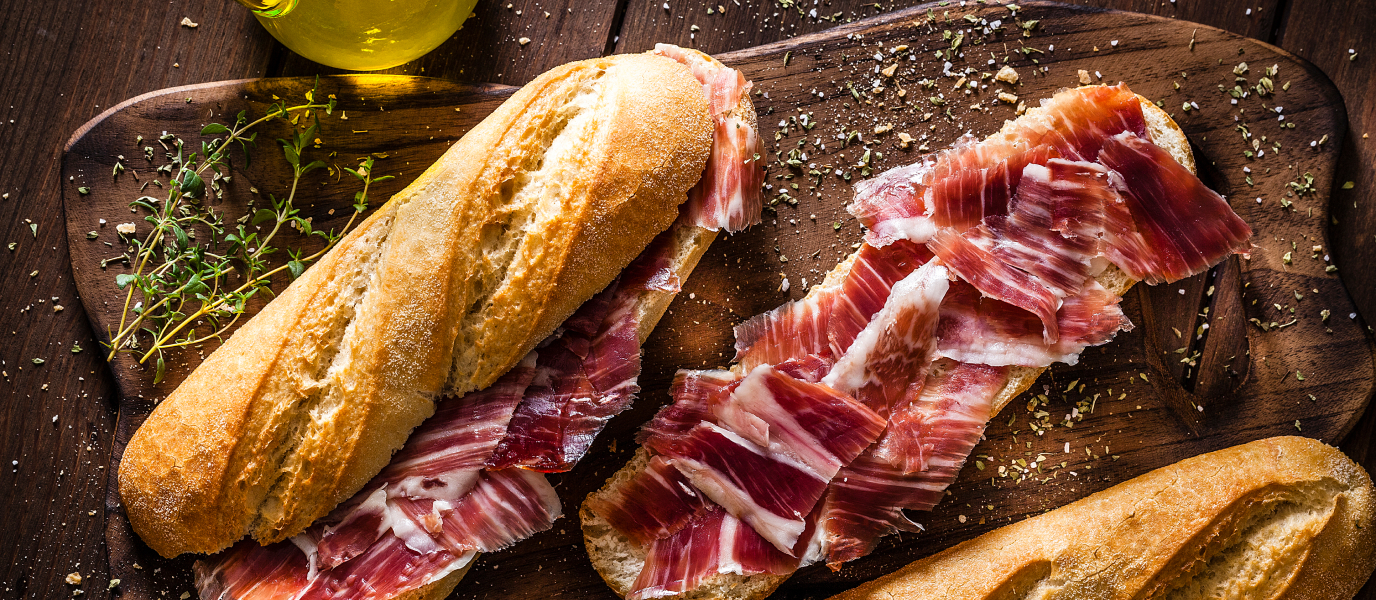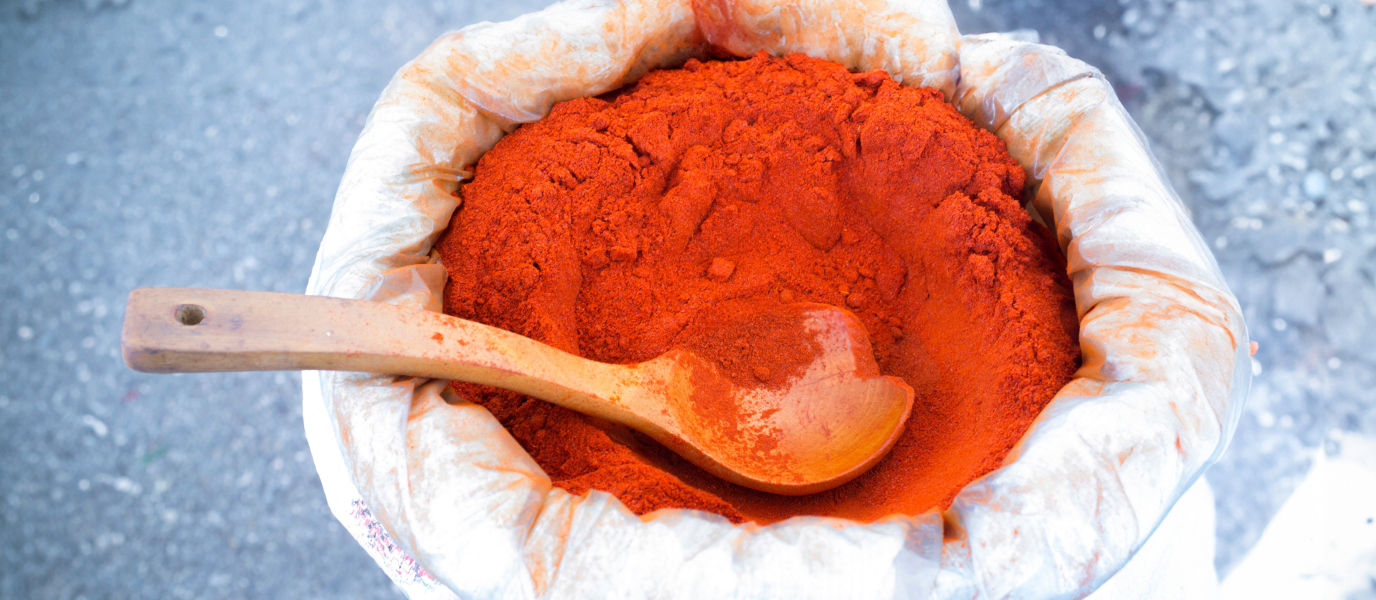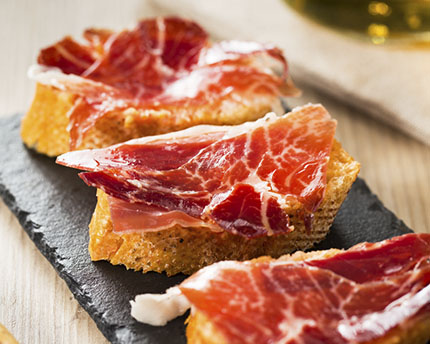Jamón Dehesa de Extremadura is the number 1 product in the local larder (without meaning to disparage its delicious Casar, La Serena and Ibores cheeses). This ham is produced with great care to the most exacting standards and has the honour of its own protected designation of origin label (or DOP as it’s called in Spain).
The DOP Jamón Dehesa de Extremadura completes the run of aces when it comes to acorn-fed (bellota) Iberian ham, along with Jabugo, Los Pedroches and Jamón de Guijuelo.
For the uninitiated, these hams come from the hind leg of an Iberian pig which has been reared in natural surroundings and often in semi-freedom. For at least part of their life they’re fed a diet of holm oak acorns or bellota, in some cases supplemented with other plant-based products from the dehesa (more on this type of pastureland later) of Extremadura.
About the hams of Extremadura
You may be wondering what the difference is between Jamón Dehesa de Extremadura and other Iberian acorn-fed hams. Technically there’s not a lot between them, since they’re all made in much the same way, but the taste, texture and smell of each ham depends on many factors linked to the rearing method, curing time and the environment throughout the process.
Lucky for us, there a simple labelling system for identifying the different types of Iberian hams:
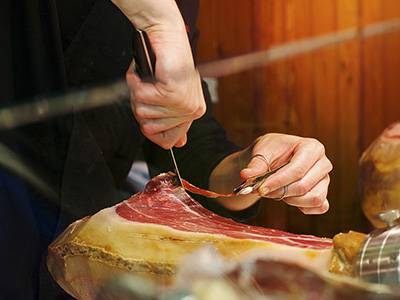
- Black: These hams are from 100% Iberian pigs reared in semi-freedom on the dehesa (we’ll come back to this, we promise) and fattened during the last stage of their life with natural forage, aromatic herbs and wild acorns.
- Red: From mixed breeds (i.e. not pure Iberian pigs) raised and fed in the same way as with black label ham.
- Green: Produced from pigs which are 50-100% Iberian. Their cereal-based diet is complemented with natural forage. Look out for jamones de cebo de campo ibérico on the label.
- White: The purity of the breed is the same as with Green label ham, the difference being that the pigs are reared indoors and fed a cereal and plant-based diet.
The dehesa of Extremadura
We’ve gone through the labelling system, so now let’s look at the environment which is so crucial to producing these characteristic and succulent hams.
The dehesa is type of natural pastureland in Spain which has been changed by the hand of man over the centuries. The dehesa of Extremadura has a total surface area of around a million hectares, and the dehesa ecosystem is very much a part of the region’s cultural and environmental fabric.
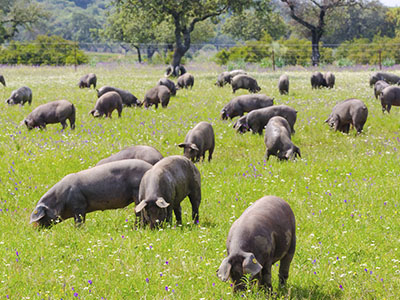
It’s typically populated with holm oak, cork oak and olive trees. These, in turn, provided the shady conditions favoured by several species of bush and herbaceous plants. The Iberian pigs feed on this biodiversity of plant life and (compared with other farm animals anyway) have a pretty charmed life.
The pigs out on the dehesa during the grazing season are quite the sight to behold. They spend the last stage of their life at pasture, during the coldest months of the year and part of spring.
DOP Extremadura
As we mentioned earlier, the Iberian hams from this autonomous community have their own protected Designation of origin: DOP Dehesa de Extremadura. Since 1990, local producers have had the support of a regulatory board which safeguards product quality in accordance with strict standards.
Under this DOP, the purity of the Iberian pigs must be at least 75%, and the animals may only be a cross between Iberian and Duroc-Jersey breeds.
The DOP Dehesa de Extremadura covers the following products:
- Jamón (ham): The hind legs of the pig. Must weigh no less than 5.75 kg.
- Paleta (shoulder): The front legs. Must weigh no less than 4 kg. Just as tasty as ham but with a higher percentage of fat. The bone structure makes them more difficult to carve.
- Caña de lomo (loin): To meet the DOP Dehesa de Extremadura standards, these products must be from pigs with a breed purity of at least 75% Iberian.
Choosing the best hams in Extremadura
Choosing a good dehesa ham is no easy task. Though all DOP hams in Extremadura meet exacting quality standards, there’s a world of difference between them.
Clearly, the ham from a pig which has spent its entire life on pastureland among holm and cork oak trees is going to be far superior to that of a pig which has spent most of its existence indoors on a diet of animal feed.
Iberian ham is also totally different to that from other breeds. The main difference between an Iberian and serrano ham are the fine lines of fat running through the first.
A good Jamón Dehesa de Extremadura should be sliced with a knife at room temperature and not refrigerated so as to intensify its smell and taste. The slices should be as thin as possible and cut the full width of the leg. Ideally you shouldn’t have to chew it – each slice should simply melt in your mouth.
Extremadura hams are primarily produced in the following areas:
- Montánchez: This municipality is a little over 700 metres above sea level, and the ham cellars here follow the tradition of curing the meat in the fresh mountain air.
- La Serena: This region is to the north of the wine-making area called the Ribera del Guadiana. The dry hot climate makes for aromatic hams with an intense flavour.
- Llanos de Olivenza: Olivenza and Jerez de los Caballeros are the two prime ham-making areas in this region to the south-west of the province of Badajoz. The pigs are reared on extensive dehesa and are fed an acorn-rich diet supplemented with other natural plant-based foods.




































































